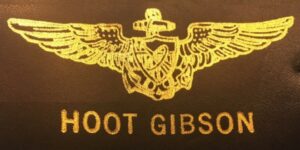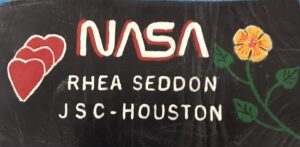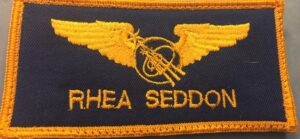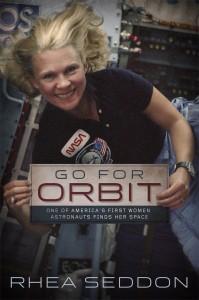Wings
To military aviators, completing flight training carries a great deal of importance.
The end of the training culminates in a ceremony to certify they’ve earned their “wings.” Military wings have a symbol of their branch of the service with symbolic wings to the side. The United States Navy wings are gold, and the United States Air Force has silver ones. (Hence the Navy boot camp marching song: “I don’t know but I’ve been told Navy wings are made of gold. I don’t know but it’s been said Air Force wings are made of lead.”) For the recipients, it is a memorable day. When our group of astronauts arrived at the Johnson Space center in 1978, all the pilot Astronauts had nametags for their flightsuits with their military wings, along with their names. So there was a dilemma. Some of us had no wings.
Non-pilots at first simply had their names and the NASA logo on the tags. In the days before “political correctness,” the fellows at the equipment shop thought it would be cute to put hearts and flowers on ones for the six women. Whatever they wanted me to wear was fine as long as they let me fly in the jets.
Our group would be the first not to go through formal military flight training. Instead, Mission Specialists would complete a syllabus of classroom work and T-38 jet flights with fellow pilot astronauts. Once we had completed the training, we all went out for a beer to celebrate, but there were no real wings for us to receive.
When our entire group was promoted to full Astronaut status, a problem arose. My husband, Robert “Hoot” Gibson, was holding the job of Deputy Chief of Aircraft Operations, and the head of the Personal Equipment Branch approached him. Ken Baker was tasked with ordering new embroidered nametags for our new NASA flightsuits. They would include the astronaut symbol superimposed over the military wings.
What about the non-military folks?
The pilots—jokesters—came up with a bunch of silly designs like ones with butterfly wings or hands held out in a clueless shrug. We were not amused. Finally, Hoot had a simple solution. In place of the military shield in the center, there would be the Astronaut symbol. He didn’t open it up for discussion or take it to higher levels at NASA; he just took it to the Chief of the Astronaut Office, John Young, for approval. John was busy training for command of the first Space Shuttle flight and was happy to have the problem solved.
Mission Specialist wings were born.
– Rhea
We’d love to add you to our email list.
If you have not yet signed up, please do so by clicking here.






Great story. You certainly deserved those wings.
I like your style of writing explaining us how things were organised.
Have a very nice month you 2 in good health.
Nice greetings from Spain.
Harry and Diny
Dear Rhea:
Nice touch about the wings. Should be in the book.
William E. Powell, M.D.
And Payload Specialists had a similar design on their namebadges, with the shuttle in lieu of the astronaut symbol.
Great story! This is a good one to use as trivia for museum visitors!
When my father was in POW camp in WWII, the POWs actually made replicas of their wings from lead cans. This was before USAF. The wings were Army Air Corp. There were Britsh POWs in the camp also, so there are also RAF wings in the collection from Stalag Luft I ( Barth, Germany).
Good leaders are diplomatic, insightful and decisive. You and Hoot are role models for leadership. THANK YOU for your service.